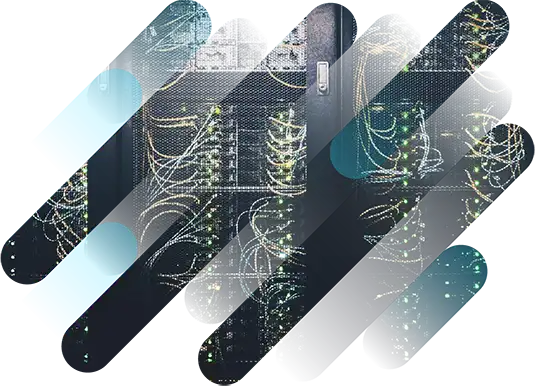Discover how Myra combines digital sovereignty and cyber resilience.
Home>
What Is Application Security?
At one look
- 1.
Basic definition
- 2. Importance of application security
- 3. The shift-left approach in application security
- 4. Web Application Security
- 5. Cloud Application Security
- 6. Methods for testing application security
- 7. Common threats to applications
- 8. Important security measures and tools
- 9. Best practices for application security
- 10. Current trends and innovations
- 11. Application Security: What You Need to Know
01
Basic definition
Application security (AppSec) encompasses a range of processes, tools, and practices that protect software applications from cyber threats throughout their entire lifecycle. It is not a single technology, but rather a holistic approach to identifying, fixing, and preventing security vulnerabilities in software applications. Because applications play a central role for both businesses and individuals, application security has become an indispensable part of cybersecurity.
02
Importance of application security
Cybercriminals are increasingly exploiting vulnerabilities in applications to steal intellectual property and sensitive data. Integrated application security helps minimize these threats by preventing unauthorized access and protecting data from theft, deletion, or manipulation.
The importance of application security lies in several key aspects:
Protecting sensitive data from unauthorized access and theft
Preventing disruptions to business continuity due to cyberattacks
Compliance with regulatory requirements and data protection guidelines
Building and maintaining customer trust in digital services
Ensuring the confidentiality, integrity, and availability of applications
While security aspects were previously neglected in software design, they are now an indispensable part of secure software development, especially for applications that run over networks.
04
Web Application Security
Web application security is a specialized area of application security that focuses on protecting web servers, web applications, and web services such as APIs from attacks by internet-based threats. This discipline encompasses a variety of processes, technologies, and methods aimed at protecting web applications from cybercrime.
Essentially, web application security is about secure access to web applications and the need to ensure that these applications are not crippled or compromised. Web application security is critical to protecting data, customers, and organizations from data theft, business continuity disruptions, or other harmful consequences of cybercrime.
Specific challenges with web applications
Web applications face specific security challenges because they:
Are publicly accessible via the internet and therefore offer a larger attack surface
Often process and transmit sensitive user data
Are vulnerable to typical attack methods such as cross-site scripting and SQL injection
Work with various APIs, open-source code, and third-party widgets that may have vulnerabilities
Web application security protects not only the security of the company's data, but also that of its users, i.e., your customers. It is therefore necessary that the code of these applications is written free of security vulnerabilities and that these applications are made available in a scalable manner.
05
Cloud Application Security
The shared resources in cloud environments pose additional challenges for application security. It must be ensured that only authorized users have access to sensitive data in cloud-based applications. Since this data is often transmitted over the Internet, it is particularly vulnerable to cyberattacks.
A robust cloud security strategy that includes encryption and strict access controls is therefore essential to ensure the security of applications and transmitted information. Today's applications are often available across different networks and connected to multiple clouds or edge environments, which increases the risk by expanding the attack surface.
06
Methods for testing application security
There are various methods for testing applications for security vulnerabilities. Such tests often simulate malicious attacks to identify vulnerabilities before they can be exploited. The most important testing methods include:
SAST (Static Application Security Testing)
SAST checks the source code for vulnerabilities without having to run the application. This method analyzes the code during the development phase and identifies potential security issues early on.
DAST (Dynamic Application Security Testing)
DAST examines running applications for potential threats. Unlike SAST, DAST tests the application during runtime and simulates real-world attack scenarios.
Both approaches are essential to ensuring comprehensive application security. The combination of SAST and DAST provides a holistic security assessment that covers both code-level and runtime behavior.
08
Important security measures and tools
Hundreds of security tools are available to businesses, each serving unique purposes. Some solidify changes to the code, others look for threats to the code, and some set up data encryption. The most important security solutions include:
Web Application Firewalls (WAF)
A web application firewall specifically protects applications from attacks such as cross-site scripting (XSS) or SQL injection without requiring code changes. It filters HTTP traffic at the application level and detects suspicious requests in real time.
Multi-factor authentication (MFA)
Multi-factor authentication strengthens access protection by combining multiple verification factors, such as passwords, smartphones, or biometric data. This prevents unauthorized access even if passwords are compromised. MFA is indispensable today, especially in cloud and remote environments.
Data encryption
Data encryption protects sensitive information during transmission and storage. Methods such as TLS/SSL and AES convert data into unreadable code so that it cannot be exploited in the event of an attack. Consistent encryption is particularly crucial in cloud environments.
Bot management tools
These tools detect and block malicious bots used for credential stuffing, web scraping, or DDoS attacks. They analyze device behavior and fingerprinting to stop automated activities. This keeps applications performing well and protects the user experience.
DDoS protection
DDoS protection systems prevent attackers from crippling applications with massive requests. They detect suspicious traffic patterns and filter out malicious data packets before they reach the server. Cloud-based solutions offer scalable protection even against large-scale attacks.
Antivirus systems
Antivirus systems detect and eliminate malware that could compromise applications or systems. In addition to classic signature detection, heuristic analysis and real-time monitoring are also used. Modern solutions integrate features such as ransomware and exploit protection for comprehensive security.
09
Best practices for application security
Secure coding practices
Secure coding practices are fundamental to developing secure applications. Developers should be familiar with security principles from the outset and apply them consistently.
Vulnerability assessments and security testing
Regular vulnerability assessments and security testing are necessary to identify potential risks early on. These should be performed continuously throughout the development cycle.
Threat modeling
A deep understanding of expected application behavior, associated threat models, and risks associated with application components, configurations, and functions is essential. This enables proactive identification of potential vulnerabilities.
User input validation
Various methods for validating user input ensure that it is not malicious before it is processed by an application. This is a fundamental protective measure against injection attacks.
Continuous monitoring
Application security is continuously evolving to keep pace with new technologies, changing threat landscapes, and changing development practices. Continuous monitoring of deployed applications is therefore essential.
10
Current trends and innovations
Application security will undergo radical change in 2025. With the increasing availability of AI, attacks are changing fundamentally: cyber actors are using “offensive AI” to identify vulnerabilities more quickly and adapt attack strategies in real time. Over 82% of companies already confirm a noticeable increase in the threat level posed by AI-supported attacks (Myra State of Digital Sovereignty 2025).
AI has a dual effect: risk and protection factor
While attackers use AI to control botnets or vary DDoS vectors, AI on the enterprise side supports the prioritization of vulnerabilities and automated defense processes. Companies that fail to follow suit will experience a measurable loss of resilience.
Key developments at a glance
Zero Trust & Digital Sovereignty
Geopolitical risks and compliance requirements are reinforcing the trend toward European security solutions. Companies are actively reducing their dependence on non-European providers in order to secure control over data and infrastructure.Financial sector and public authorities particularly affectedAccording to the Myra Cybersecurity Report H1 2025, 40% of all attacks defended against in the first half of 2025 targeted banks and public institutions – often with DDoS campaigns lasting many hours.
Focus on API and bot traffic
AI-based bots now generate massive load spikes that can significantly impact websites and APIs. Modern protection systems must be able to distinguish between legitimate requests and automated traffic.Consolidation instead of tool proliferation
Security teams are increasingly relying on application security posture management (ASPM) to holistically assess risks and centrally control measures.



